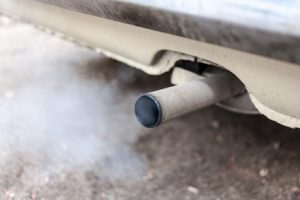European directives require vehicles to meet certain emission standards. Although the United Kingdom is planning on leaving the European Union, it is likely that these standards will continue to impact on vehicles which are made or sold in the United Kingdom. Most vehicles which are made in the United Kingdom are likely to be designed with these directives in mind, so that vehicle  manufacturers will be able to sell their cars to European Union markets. On the other hand, vehicles which have been made in the European Union (the majority of new cars which are sold in the UK today) will also be striving to meet these standards. Other global manufacturers, including Australian manufacturers have also made steps toward matching EU standards, so that they can continue to remain competitive in Europe.
manufacturers will be able to sell their cars to European Union markets. On the other hand, vehicles which have been made in the European Union (the majority of new cars which are sold in the UK today) will also be striving to meet these standards. Other global manufacturers, including Australian manufacturers have also made steps toward matching EU standards, so that they can continue to remain competitive in Europe.
Emissions targets have been reduced because current levels of emissions are unsustainable. Research which was compiled before the introduction of these targets shows that passenger cars and vans contribute around 15% of all Carbon Dioxide emissions in the European Union. This equates to about 3.5% of all emissions worldwide. In addition to this, vehicle exhaust fumes also contribute to levels of other harmful gases and fine particle substance levels in the environment.
Carbon Dioxide Emissions Limits
There are no set limits for Carbon Dioxide emissions levels in the European Union, although it is likely that these will be introduced in future as manufacturers start to bring their vehicles into line with set targets. At present, EU Regulation No 443/2009 sets targets for CO2 levels as no more than 130 grams of carbon dioxide per kilometre driven. The intention is that the target levels will be gradually reduced over time as low emissions technology is improved. This will fall to 95 grams of carbon dioxide per kilometre by 2021.
Legislation which was introduced in 1999 also states that information about the fuel economy and carbon dioxide emissions levels must be clearly stated in marketing materials for new vehicles. Member states were given the freedom to enact this Directive as they saw fit. Some member states have introduced traffic-light labelling systems to make these labels easier for consumers to understand.
European Emissions Standards for Passenger Vehicles
Permissible emissions levels for European Union vehicles depend on the type of vehicle which is being assessed. Cars and commercial vehicles are separated out into different categories according to their size and usage type. Emissions standards are also divided between petrol and diesel vehicles. This is because petrol and diesel do not necessarily produce the same types of emissions. Different targets have been created to ensure that both fuel sources are appropriately controlled.
Substances which are measured during these tests include; Carbon Monoxide, Hydrocarbons, Nitrogen Oxides, and atmospheric particle matter. Atmospheric particle matter is the name given to solid or liquid particles that are so small and light that they are suspended in the air or the Earth’s atmosphere. Atmospheric particle matter can be breathed in and may cause irritation to the lining of the respiratory system.
Vehicles which produce emissions levels that are below a pre-determined minimum can be classified and sold as enhanced environmentally friendly vehicles (EEV). Meeting these standards allows manufacturers to market their vehicles as clean or green vehicles. It is expected that green vehicles will start to become more and more popular over the next couple of decades.
Debates about European Union Emissions Standards
Debates about the fairness and meaningfulness of European Union standards have been raging over the past few years, since it emerged that some leading car manufacturers had been taking steps to falsify test results. Before the scandal broke in 2015, many emissions tests lacked transparency, meaning that it was difficult for consumers to interpret the significance of the results which were being presented to them. It was discovered that Volkswagen had tried various tricks to lower engine emissions such as; removing non-essential weights (back seats etc) from the vehicle; covering and taping down parts of the exterior to make the cars more aerodynamic; switching off some components which would normally be in use when the car was on the road; and disconnecting the alternator which is responsible for charging the vehicle’s battery. All of these steps mean that emissions levels are far lower than they would be if the vehicle was tested out on the road.
Subsequent analysis has shown that some vehicles which were considered to have “passed” emissions tests thanks to low emissions levels actually produced over 40 times the recommended Nitrogen Oxide levels. These revelations have made EU officials rethink the way that they assess vehicle emissions. It is likely that the testing cycles will become more stringent over the next few years and more pressure will be put on manufacturers to encourage them to lower emissions standards.






